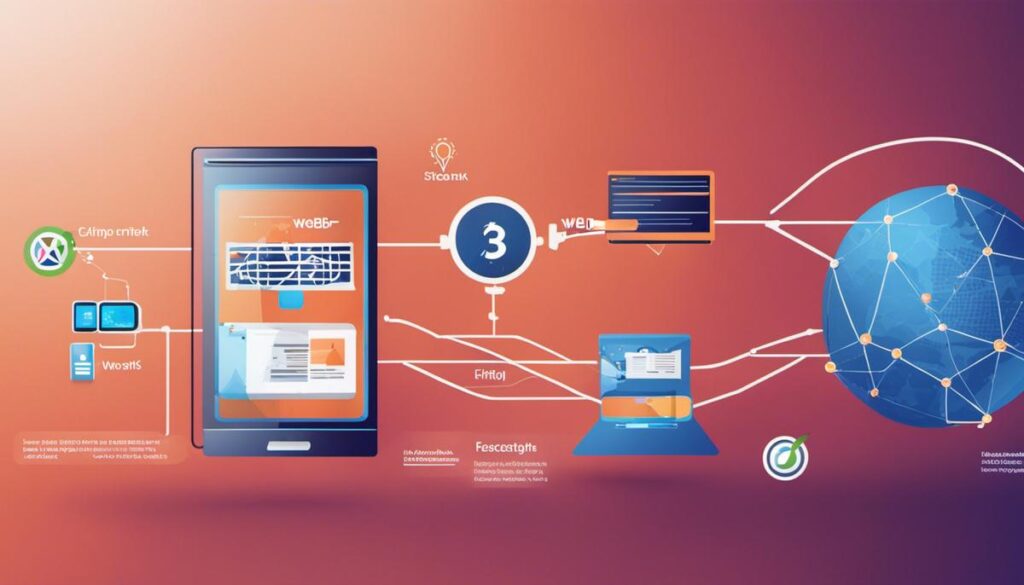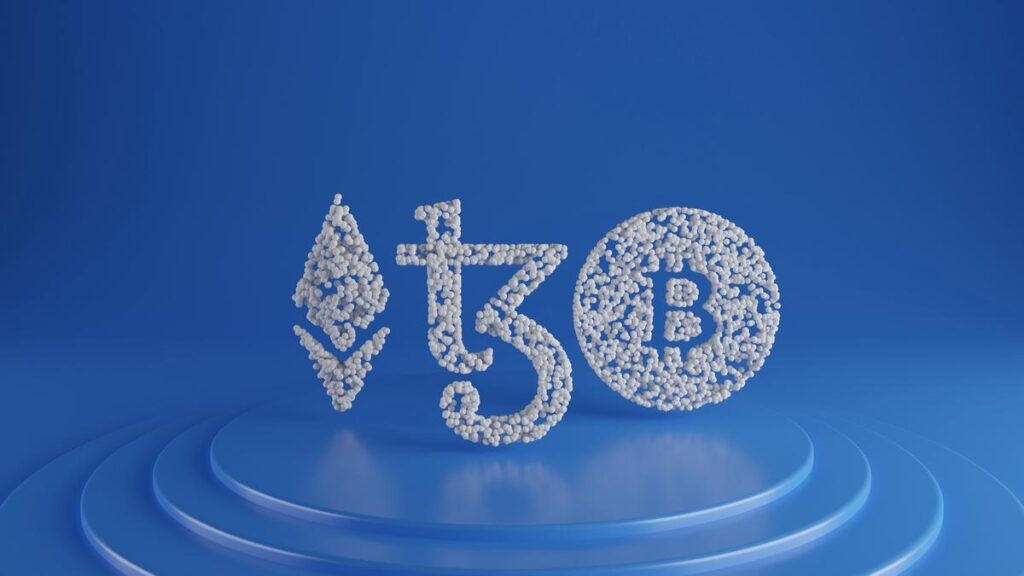Web3 and Cryptocurrency: A Comprehensive Guide

In an era where technology is rapidly advancing and reshaping our universe, two remarkable concepts have surged – Web3 and Cryptocurrency. Web3, often referred to as the third generation off the internet, takes us a step beyond the second generation’s traditional model – Web 2.0 – adding a decentralized model for online interaction and economic activity. Alongside it, cryptocurrency emerges as a digital or virtual form of currency, hastily becoming the favorite mode of exchange in this era of digitization. This piece delves into these paradigms, seeking to educate and illuminate on what Web3 and cryptocurrencies are, their impact, interconnection, and potential, and how one can get started with them.
Basics of Web3
What is Web3?
Web3, or Web 3.0, is the third generation of Internet systems. This concept is completely different from Web 2.0, the current generation of the internet we primarily navigate. Web 3.0 focuses on decentralization, a stand-out feature that drastically shifts the paradigm of online data management and security. Web3 utilizes technologies such as Artificial Intelligence (AI), machine learning, and the Internet of Things (IoT) to transform the way in which the internet is used and contribute to improving human interaction, data security, and privacy.
From Web 2.0 to Web3
Web 2.0 is the current state of our online experiences. This version of the internet is centered on user-generated content, interoperability, and the proliferation of social media platforms. In essence, Web 2.0 entails the transition from static web pages to dynamic or user-generated content. It also signifies enhancements in regards to how people share data online and through social networking sites.
Yet Web 3.0 plans to expand upon this by making the internet more intelligent, offering users personal browsing experiences driven by machine learning and AI. The decentralization aspect of Web3 dethrones major internet companies from being the sole controllers of information online. This means information is no longer controlled and monetized by a select few entities, promoting equal access and distribution of resources.
The Features and Advantages of Web3
Web3 is designed to improve the way the internet functions by making it smarter, faster, and more secure. It employs cutting-edge technologies such as semantic web, artificial intelligence, 3D graphics, and blockchain technology among others. With these technologies, Web3 intends to create an internet environment where applications are capable of reasoning and making decisions, pages are personally tailored to individual users, and information is securely stored and controlled by users.
One of the major advantages of Web3 is the liberation of personal data. Currently, big tech companies monetize users’ data without giving any sort of compensation in return. Web3 plans to change this practice by providing users with complete control over their own data. This reclaims the value of individual information back to the person it belongs to, fostering an egalitarian virtual space.
Web3 and Cryptocurrency
The concept of Web3 aligns well with the ethos of cryptocurrencies. Cryptocurrencies represent a digital asset that operates on a decentralized system, similar to the principle of Web3. Blockchain technology, which supports cryptocurrency transactions, encourages decentralization by distributing digital information across multiple platforms instead of storing it in a single location.
Cryptocurrency transactions are also recorded on blockchains which provide an unalterable record of all transactions ever made. This reinforces Web3’s emphasis on security and transparency. Further, the rise of blockchain and cryptocurrency have made it possible to create Decentralized Applications (DApps) and Decentralized Autonomous Organizations (DAOs), both of which stand as proof of concepts for the decentralized nature of Web3.
Web3 and cryptocurrency are remarkable technological advancements that fundamentally promote decentralization. They offer enhanced reliability, user autonomy, and unprecedented control of personal data. Continual developments in these fields unlock fresh avenues for us to communicate, transact, and acquire knowledge in the digital sphere.

Cryptocurrency: An Introduction
The Dawn of Cryptocurrency
Cryptocurrency made its debut in 2008 with the invention of Bitcoin. An entity or group using the pseudonym Satoshi Nakamoto launched Bitcoin, carving its legacy as the first system of an electronic peer-to-peer cash system. This groundbreaking move was driven by a fervent desire to circumvent the traditional governance of financial institutions and governments, propelling a payment system founded solely on cryptographic proof and mutual trust into existence.
Cryptocurrency: The Digital Currency Concept
Fundamentally, cryptocurrency is a type of digital or virtual currency, which relies on encryption techniques to secure transactions, control the creation of new units, and verify the transfer of assets. Unlike traditional currencies, cryptocurrencies operate on decentralized platforms, often called a blockchain.
Understanding Blockchain and its Relation to Cryptocurrency
In the context of cryptocurrencies, a blockchain is a public ledger containing all transaction data from anyone who uses a given cryptocurrency. More than just cryptocurrency transactions, blockchain technology can be used to create smart contracts for any industry, like the music industry or the real estate industry.
Web3 and Cryptocurrency
Web3, short for Web 3.0, is the next generation of internet services for websites and applications, projected to radically shift how we interact with the web by moving from a centralized web to a decentralized one. In the context of cryptocurrency, the goal of Web3 is to give financial control back to the people, limiting the control that banks and government institutions have over individuals’ wealth. Cryptocurrencies form an integral part of Web3 as they serve as the economic layer, completely transforming the financial transactions within this infrastructure.
Benefits and Risks
Cryptocurrencies hold significant allure due to key features like decentralization, anonymity, fast transactions, and low transaction fees. The decentralization of cryptocurrencies allows for a more democratized system, where no single party holds authority or control. Anonymity adds an additional layer of privacy for individuals who might be wary of institutional tracking.
However, cryptocurrencies also pose substantial risks. The same anonymity that serves as a benefit can also make cryptocurrency an appealing tool for illegal activities. Cryptocurrency markets are highly volatile, with dramatic price boosts and drops not uncommon.
Cryptocurrency’s Impact on the Financial Sector
Cryptocurrencies have rocked the financial sector, upsetting the status quo. They have forced a reevaluation of existing financial systems while introducing a new form of wealth creation and investment structures. Industries are now scrambling to integrate blockchain technologies for more efficient operations. From banking and payments to insurance and real estate, every segment of finance has been on the precipice of a radical shift due to this digital disruption.
Envisioning the Future of Digital Finance
The emerging world of Web3 and cryptocurrency signals an exciting shift in our financial paradigm. These revolutionary developments reflect our remarkable technological advancements and offer a glimpse into a future where monetary control is decentralized. As this area continues to evolve at a dizzying pace, the full ramifications and potential of these changes largely remain uncultified, highlighting a plethora of opportunities for growth, investment, and invention in the future.

Blockchain Technology
Decoding the Blockchain
At its core, the blockchain is an open record of digital information shared across a network of independent computers, also referred to as nodes. This structure ensures that each piece of information, or block, is timestamped, transparent, and permanently recorded on numerous machines, scattered across various locations worldwide.
How Blockchain Works
A blockchain operates by recording digital transactions, such as the purchase of a cryptocurrency, in blocks. These blocks are sequentially ordered to provide a tangible history of data exchanges. Every time a block is filled with information, a new one is created and linked to the previous block, thus forming a chronological chain.
For instance, if Person A trades some of their Bitcoin to Person B, the transaction is represented as a block. This block is confirmed by nodes, spread out across the globe, that solve a complex cryptographic puzzle. Once affirmed, the block is added to the chain, symbolizing a completed transaction.
Enhanced Security Through Blockchain
Blockchain technology is highly secure due to its decentralized and immutable characteristics. As a distributed ledger, the blockchain operates across multiple nodes that independently regulate and confirm each block and its associated transactions. This decentralization eliminates the risk of a single point of failure, enhancing security as there’s no master copy for potential perpetrators to manipulate.
Further, once a block is added to the chain, the transaction cannot be altered. This immutability ensures the longevity and veracity of each record, making fraudulent activity incredibly difficult.
The Role of Decentralized Transactions
In traditional financial systems, a trusted intermediary, such as a bank or a government, is necessary to confirm the validity of transactions and essentially control the ledger. The advent of blockchain has disrupted this model by enabling direct peer-to-peer transactions.
Whether it’s a transfer of cryptocurrency, such as Bitcoin, or an exchange of data in a decentralized app, blockchain technology cuts out the middleman. As such, transactions can be finalized more quickly and efficiently, even across borders, granting users more control and privacy.
Cross-Sector Applications of Blockchain
While finance was the first sector disrupted by Blockchain flexibility, others are following suit. For instance, in the healthcare sector, blockchain could offer secure, accessible records that can be shared promptly among healthcare providers, promoting more efficient and coordinated care.
In retail, blockchain ensures the authenticity and traceability of products, combating counterfeit items, and fostering consumer confidence. Education, real estate, and logistics are other sectors getting a makeover thanks to this technology.
To sum up, the foundational technology behind both Web3 and cryptocurrency, known as blockchain, is revolutionizing the manner in which we carry out transactions across multiple industries. This technology, heralded for its decentralized design, transparency, and robust security, harbors immense potential for driving future innovation.

Web3 and Cryptocurrency: Interconnection and Impact
Understanding the Link Between Web3 and Cryptocurrency
The concepts of Web3, or Web 3.0 as it’s also known, and cryptocurrency are fundamentally intertwined. In essence, cryptocurrency is a digital currency secured by cryptographic technology. It exists predominantly on a platform called blockchain, a decentralized system spanning numerous computers that record and manage transactions.
Meanwhile, Web3 represents the future of the internet – a decentralized version of it. This incarnation aims to eliminate the monopoly of a few major corporations over the services most frequently used on the web. Instead, Web3 empowers users by allowing them to control their own data, identity, and digital fate in a peer-to-peer network run without the need for a centralized authority.
In this new internet era, cryptocurrencies play a vital role as they facilitate transactions and manage value in a decentralized way. But in the Web3 landscape, cryptocurrencies go beyond merely being digital currency. They transform into programmable assets capable of facilitating smart contracts and powering decentralized applications (dApps).
How Web3 and Cryptocurrency Complement Each Other
Web3 and cryptocurrencies go hand in hand – the decentralized nature of cryptocurrencies aligns perfectly with the ideology of a decentralized Internet. Web3 represents a shift away from centralized platforms and gives more power to individual users, something that cryptocurrencies have been championing since the inception of Bitcoin.
Cryptocurrencies in this scenario act as the medium of exchange and store of value within the decentralized networks of Web3. However, their responsibility doesn’t stop there. Cryptocurrencies, or more specifically ‘tokens’, also serve as the economic layer of various Web3 applications to incentivize user behaviour and secure network participation.
The Impact and Potential Future of Web3 and Cryptocurrency
The confluence of Web3 and cryptocurrency has the potential to redefine the power dynamics of the internet. It presents a future where users regain control over their personal data and are fairly rewarded for their contributions to the web. These systems also promise enhanced privacy and security, due to the immutable and transparent nature of blockchains.
Moreover, new models of financial participation and ownership are being unlocked by this synergy. This extends beyond just owning cryptocurrencies. Users can own parts of platforms and services via tokens that represent a form of economic and governance stake. This model, known as Decentralized Autonomous Organizations (DAOs), is already being used successfully in various Web3 platforms.
Real-world Applications and Scenarios
Numerous Web3 platforms powered by cryptocurrencies are already demonstrating the potential of this novel combination.
Decentralized Finance (DeFi) platforms like Uniswap, AAVE and MakerDAO have created entirely new financial services ecosystems without any central authority. Using solely smart contracts and cryptocurrencies, these platforms offer services like lending, borrowing and trading.
NFT (Non-Fungible Token) marketplaces like OpenSea and Rarible have given artists and creators a platform to monetize their work in a decentralized fashion, with full control over their art and its economic benefits.
Metaverses like Decentraland and Cryptovoxels are even using Web3 technology and cryptocurrencies to create virtual worlds where users can buy, sell and own virtual land, assets, and more.
In the digital world, the convergence of Web3 and cryptocurrency is creating revolutionary applications that redefine our concept of the internet. It’s breaking down traditional boundaries in finance, art, and social circles.

Getting Started with Web3 and Cryptocurrency
Exploring Cryptocurrency and Web3
Initiating our discourse, it is key to understand what cryptocurrency and the Web3 platform fundamentally are. Digital or virtual forms of money like Bitcoin and Ethereum fall under cryptocurrency. This virtual cash form exists entirely on the digital realm without any physical form of existence, in a decentralized system named blockchain.
Web3, or as it’s alternatively known, the decentralized web, represents the forthcoming evolution of the internet. Differing from the current Web2 reliant on central servers and institutions for content regulation and hosting, Web3 runs on peer-to-peer transactions network. Such decentralization offers enhanced privacy and self-governance over data.
Buying, Selling, and Storing Cryptocurrencies
To buy and sell cryptocurrencies, you’ll need to go through a cryptocurrency exchange. These are platforms that allow individuals to buy and sell digital currencies for other assets such as traditional fiat money or different digital currencies. Coinbase, Kraken, and Binance are examples of cryptocurrency exchanges.
Once you’ve acquired cryptocurrencies, storing them safely is paramount. Cryptocurrencies are stored in a digital wallet. A wallet can be online (web-based or on your device), offline (a hard drive or a dedicated device), or even paper (a printed version of the digital keys). Each type of wallet comes with its benefits and risks, and understanding these is crucial for securing your cryptocurrencies.
Navigating and Using Web3 Platforms
Web3 platforms are essentially applications or websites that operate on a decentralized network. To use them, you typically need a blockchain wallet such as MetaMask, which not only acts as a digital wallet but also serves as a bridge between you, the user, and the decentralized network of the platform.
Protecting Your Online Privacy and Security
Protection of online privacy and security in the decentralized environment of Web3 and crypto hinges on a few key practices. Firstly, always make sure to keep your private keys private. These keys are the only way you can access your cryptocurrency, so if they’re lost or stolen, your assets are as well.
Another practice is to double-check all transactions. Because transactions with cryptocurrency are irreversible, it’s crucial to ensure all addresses and amounts are correct before confirming.
Lastly, consider using hardware wallets for storing large amounts of cryptocurrencies. Hardware wallets allow you to keep your private keys in a secure offline environment, away from potential online threats.
Understanding: It’s a Long-Term Investment
Investing in cryptocurrency and engaging with the decentralized world of Web3 is indeed a fascinating prospect. However, it’s important to remember that this is a complex, rapidly-evolving field. Taking the time to continually educate yourself and seeking advice from trusted professionals is crucial for successful navigation in these cyber domains.
Remember, dealing with cryptocurrency involves substantial risk, and it’s not recommended to invest money that you cannot afford to lose. So, apply caution, invest wisely, and always keep your security in focus.
Reiterating the need for education, secure practices for handling digital assets, and mindful navigation of Web3 platforms, the journey into the crypto universe might seem overwhelming at first. Yet, the rewards can be significant for those who muster the intricacies and manage to navigate effectively through this exciting digital landscape.

Photo by theshubhamdhage on Unsplash
Web3 and cryptocurrency represent the future of technology and finance, providing a platform for decentralized applications that dramatically increase user control and privacy. Yet, they also bring unique risks and challenges that all users must consider. Therefore, as we step into this new world of opportunity, it’s indispensable to stay informed, maintain diligence and prioritize security. Hence, it is substantial to comprehend these technologies, their mechanisms, benefits, and risks. Learning to navigate the waters of Web3 and cryptocurrency is not only beneficial but also essential in today’s digital landscape as we move toward a more decentralized future.



